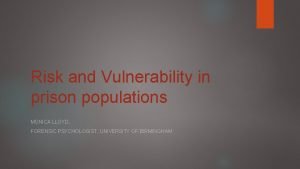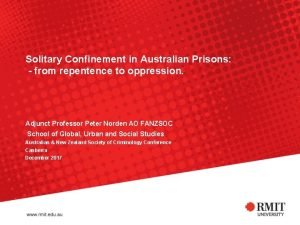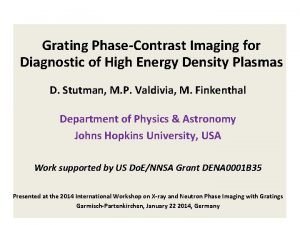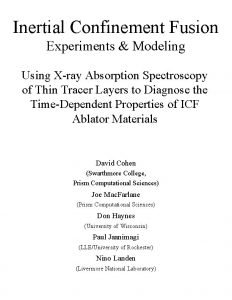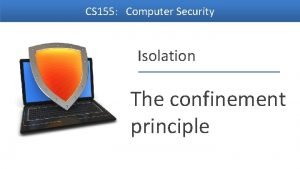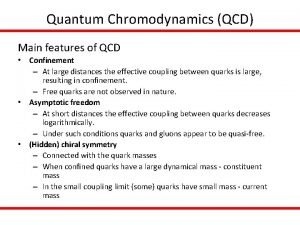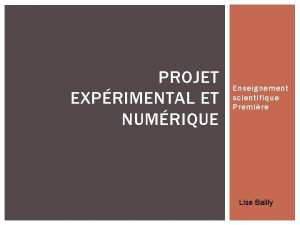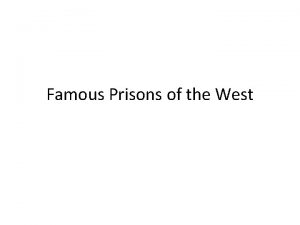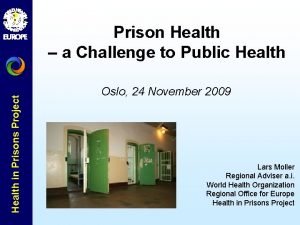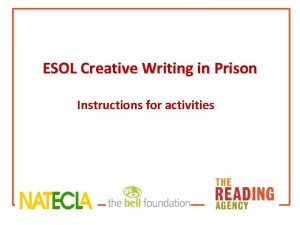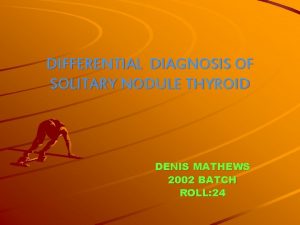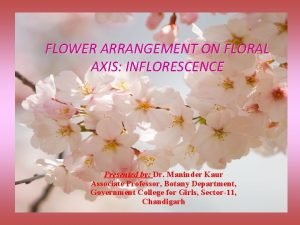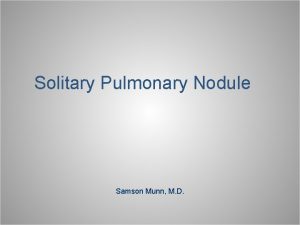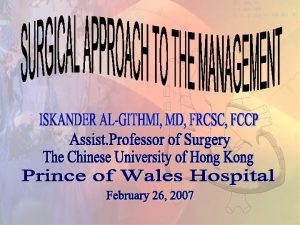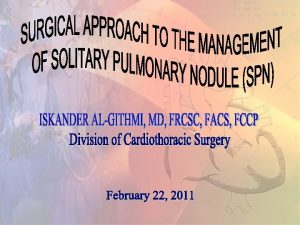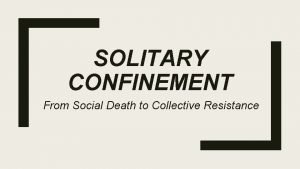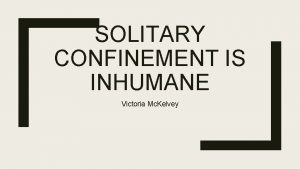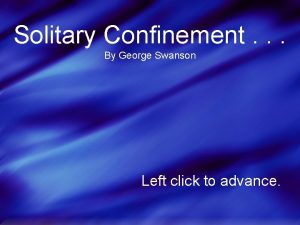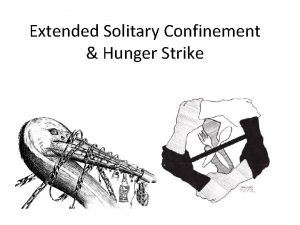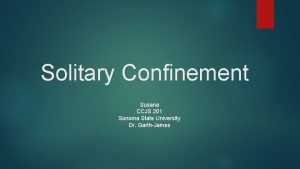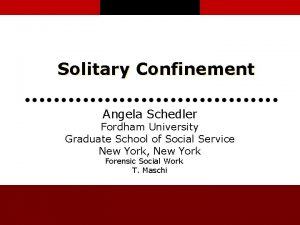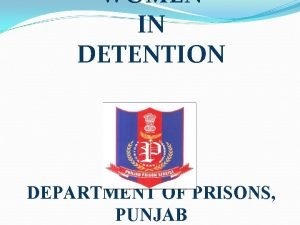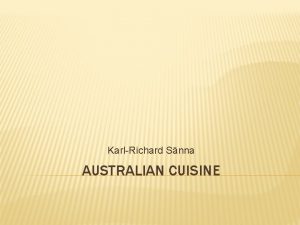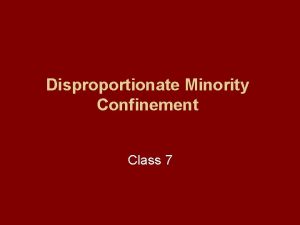Solitary Confinement in Australian Prisons from repentence to













![Another illustration: Pickett v State of Tasmania [2011] This prisoner was held in a Another illustration: Pickett v State of Tasmania [2011] This prisoner was held in a](https://slidetodoc.com/presentation_image_h/d084b54e7e96a263210807fa6310f7dc/image-14.jpg)



- Slides: 17

Solitary Confinement in Australian Prisons: - from repentence to oppression. Adjunct Professor Peter Norden AO FANZSOC School of Global, Urban and Social Studies Australian & New Zealand Society of Criminology Conference Canberra December 2017

What do we mean by ‘Solitary Confinement’? Defined in this paper according to ‘The Nelson Mandala Rules’: (The U. N. Standard Minimum Rules for the Treatement of Prisoners) ‘For the purposes of these rules, solitary confinement shall refer to the confinement of prisoners for 22 hours or more a day without meaningful human contact. ‘Prolonged solitary confinement shall refer to solitary confinment for a time period in excess of 15 consecutive days’.

U. S. Department of Justice distinctions: 1. Administrative segregation - to separate those deemed to pose a significant threat to institutional security from the general population. 2. Disciplinary segregation - imposed as a sanction after a disciplinary hearing related to a specific instance of misconduct 3. Protective custody - where inmates are segregated for their own protection

What does the Australian public know? Recent media coverage of the Dondale Detention Centre in the Northern Territory. Similar coverage of isolation imposed on young offenders at Parkville Centre and imposed on youth transferred to the Barwon maximum security adult prison. Question to be considered: What is the extent of the use of solitary confinment more generally in Australian prisons today? Can it be justified by law or U. N. human rights principles?

Consider the use of solitary confinement used at the in the former Pentridge Prison site from 1854 - ……

The ‘Separate’ System of Prison Regime: - the stated goal of repentence and reform. It was believed that once left alone with their conscience and the Bible, prisoners would engage in inner reflection, see the error of their ways and be reformed into law abiding citizens. Such regimes were popular in the 19 th Century and practiced in Port Arthur (Tasmania) Pentridge (Melbourne), Long Bay (NSW) & Fremantle (W. A. )

Later applications of this isolation model were in evidence in maximum security institutions such as Katingal and later Goulburn (NSW) and Jika and later Barwon (Victoria). However, in later years the purpose was no longer repentence and reform but social control (and oppression) over long periods of incarceration extending from months to years.


October 29 th was the 30 th Anniversary of the five deaths that occurred in Jika in 1987

Coronial findings by Hallenstein described Corrections Victoria’s non-cooperation with the inquiry into the five deaths in Jika isolation unit as acting ‘in a manner which could be described as corrupt’. (August 1989) Five prisoners held in that modern, super max, isolation unit for five to seven years…… Judicial inquiry led to changes in administration and accountability……

What is the impact of long term isolation? ‘With the exception of the death penalty, solitary confinement is the most extreme sanction which may be legally imposed on prisoners. Its adverse effects on the health and wellbeing of those subjected to it, particularly for prolonged periods, can be very serious. Yet, in recent years, there has been an increase in the use of strict, and often prolonged, solitary confinement in prisons and other places of detention across the world. This is a worrying development with potentially harmful consequences, not only for the individuals concerned but also for the wider community to which they will eventually return’. Mannheim Centre for Criminology London School of Economics

Justification of use of prison isolation? Case of high security remanded persons attending a Supreme Court trial (R v Benbrika & Ors [2008] VSC 80) ‘I am satisfied that the evidence before the Court establishes that the accused in this case are currently being subjected to an unfair trial because of the whole of the circumstances in which they are being incarcerated at HM Prison Barwon and the circumstances in which they are being transported to and from court’. Justice Bongiorno directed that the accused be held at the M. A. P. in the city, that their out of cells hours when not in court should be not less than ten. He adjourned the case for ten days for these changes to be made, indicating that if they were not he would then list bail applications for each of the accused.

Justice Bongiorno in his later sentencing comments: ‘The Victorian Charter of Human Rights and Responsibilities provides that persons deprived of their liberty must be treated with humanity and with respect for the inherent dignity as human beings. To place people in a custodial environment which is able to be foreseen as likely to result in their suffering a major psychiatric illness can hardly be said to be treating them with humanity. This is particularly so if, as here, no cogent grounds have ever been put forward as justifying such conditions for these prisoners’. (R v Kent [2009] VSC 375, 32)
![Another illustration Pickett v State of Tasmania 2011 This prisoner was held in a Another illustration: Pickett v State of Tasmania [2011] This prisoner was held in a](https://slidetodoc.com/presentation_image_h/d084b54e7e96a263210807fa6310f7dc/image-14.jpg)
Another illustration: Pickett v State of Tasmania [2011] This prisoner was held in a segregation unit in Risdon Prison for more than 4 years with no contact visits, no radio or television, one book only and one hour a day outside of his cell. It was determined that the isolation regime was in breach of the Tasmanian Corrections Act of 1997 on two grounds: Section 4(c): ‘Services and procedures should be fair, equitable and have due regard to personal dignity and individuality, as far as is consistent with the need for appropriate levels of security and control’. Section 29(1 p): ‘Every prisoner has the right to be provided with information about the rules and conditions which will govern behaviour in custody’.

Human Rights Principles & Nelson Mandala Rules: U. N. Convention against Torture and Other Cruel, Inhuman or Degrading Treatment or Punishment (1984) excluded ‘pain or suffering arising only from, inherent in or incidental to lawful sanctions’ but included such treatment ‘when such acts are committed by or at the instigation of or with the consent or acquiescence of a public official acting in official capacity’. The Mandala Rules Number 43 prohibits ‘indefinite solitary confinement’ and ‘prolonged solitary confinement’. ‘Solitary confinement shall be used only in exceptional cases as a last resort, or as short a time as possible and subject to independent review’. Rule 37 stipulates that imprisonment must be used to ensure ‘the reintegration of such persons into society upon release’.

Vic Ombudsman’s Report on Woman’s Prison: Nov 2017 (OPCAT: Optional Protocol to the Convention against Torture) Swan 2 Separation Unit: 22 - 23 hours a day isolation, 18 women. ‘Women there have little meaningful human interaction’. ‘Several women who had been held in Swan 2 described selfharming while in the unit because they felt it was the only way to get staff to engage with them’. ‘At the time of the inspection, there were several women at DPFC who had been in Swan 2 for over twelve months’. ‘Corrections Victoria defines long term as separation for longer than 30 days, rather than the 15 days set out by Mandela Rules’.

Conclusions: It is now time to find a better balance between the demands of security and safety in Australian criminal law and prison administration. As Australia prepares to take up membership on the United Nations Human Rights Council shortly, it is time for a greater application of human rights principles at home. Australia should extend those human rights principles to circumstances that could amount to torture: namely prolonged solitary confinement in our prison systems.
 Thomas silverstein art
Thomas silverstein art Solitary confinement effects
Solitary confinement effects Repentence
Repentence Inertial confinement
Inertial confinement Inertial confinement fusion lasers
Inertial confinement fusion lasers Confinement principle in computer system security
Confinement principle in computer system security Qcd confinement
Qcd confinement Inertial confinement
Inertial confinement Projet enseignement scientifique son
Projet enseignement scientifique son Adx florence famous inmates
Adx florence famous inmates Health in prisons project
Health in prisons project Examples of internal forms of social control
Examples of internal forms of social control Esol prisons
Esol prisons Token economy in prisons
Token economy in prisons What is solitary play
What is solitary play Rule of 12 in thyroid
Rule of 12 in thyroid Hallermann-streiff-syndrom bilder
Hallermann-streiff-syndrom bilder Arrangement of flowers on the floral axis is *
Arrangement of flowers on the floral axis is *

